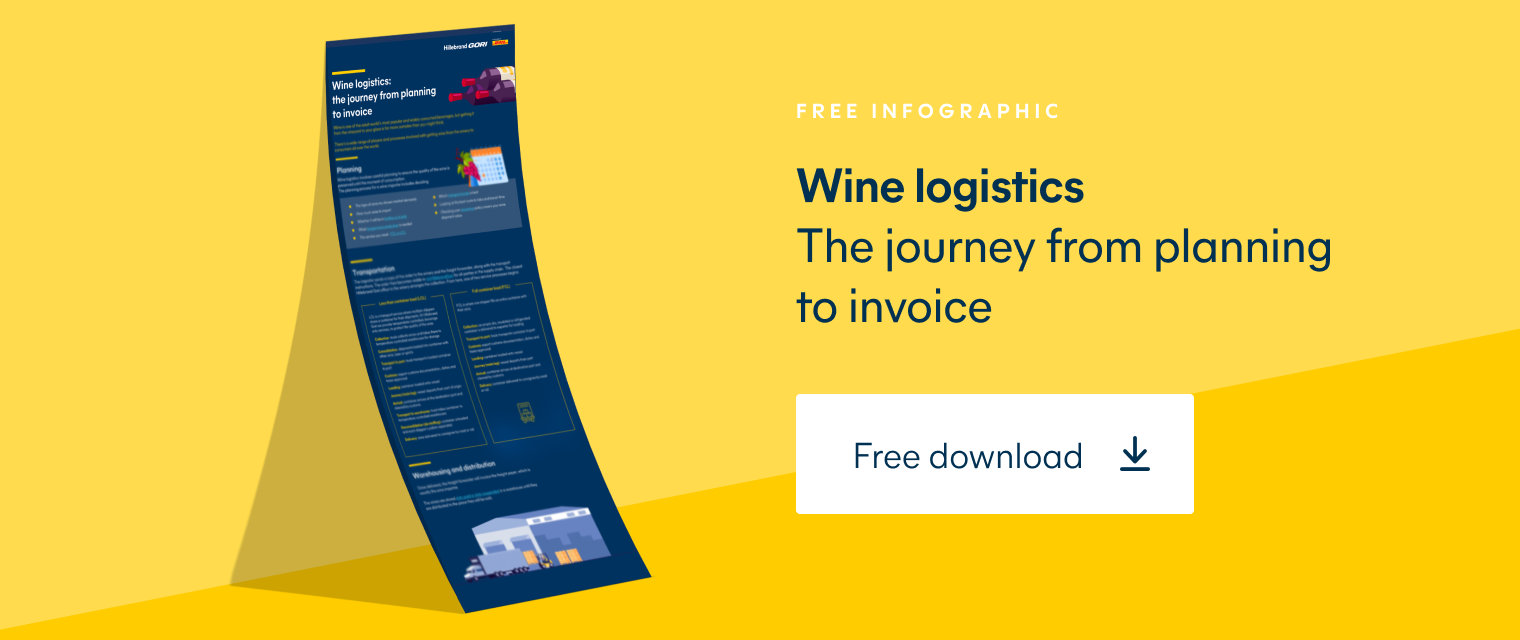Wine warehousing: The wine importer’s secret weapon
It is no secret that importing wine can be complex, with numerous logistical challenges.
One thing to consider is that the global pandemic made warehouse space tight, and we are still feeling those effects today. This could lead to further disruptions in many places around the world.
So, wine importers must find ways to store and distribute wine with minimal disruption. From looking for the wines that suit the consumer’s needs, to finding reliable freight forwarders to managing inventory, this requires being well-versed in wine warehousing and distribution.
For importers wanting to buy and sell small quantities of drinks, finding available space for storage on-premise can be challenging.Fortunately, third-party wine warehouses can offer a solution for importers looking for both long term and short term options.
Wine warehousing: What is a third-party warehouse?
Third-party wine warehouses are specialized facilities designed to store and manage wine inventory.
Wine warehousing facilities offer wine importers a secure and often, a temperature-controlled environment to store wine. They’re typically staffed by experienced professionals with deep knowledge of wine storage. This means wine importers can rest assured that their wine will remain safe and well-protected.
What should importers look for in a wine warehousing service provider?
When selecting wine storage services, wine importers should look for warehouses that provide the following key features:
Temperature control: A wine warehousing facility should be able to provide the necessary temperature and humidity levels for wine storage.
Inventory management: Beyond storage, picking and packing, Hillebrand Gori warehouses offer wineries a secure space to manage vintages with accurate records and reports.
Security measures: All wine warehouses should have robust security measures to ensure wine inventory is safe and secure.
Quality assurance: The wine warehouse should be able to provide dedicated or specialized insurance during storage and transportation.
Stock management: Find a warehouse offering easy stock removal as well as stock placement with transport services domestically and internationally.
Customs and border protection: Look for a warehouse that’s able to hold bonded and/or duty-paid wine.
Wine expertise and knowledge: The wine warehouse should have knowledgeable staff with a deep understanding of wine storage, handling and shipping.
Close proximity to wine producing areas or consumption areas: Wine warehouses should be located near wine producing or consumption areas to reduce shipping costs and transit times. Being nearby also allows for a quick market reaction.
Your arrangement with your warehouse provider can be for short-term or long-term storage.
For example, our warehouses in Beaune and Bordeaux have purpose-built, high-security and temperature-controlled vaults. Some bottles housed within them have been there since 1983 in perfect climatic conditions to protect the quality of the liquid and the labelling of the bottle.
Picking and packing is another great service for customers. From the total amount of stock you have held in a warehouse, you can choose what gets “picked” off the racks and “packed” into boxes and delivered. You’ll also be able to tap into other services such as labelling.
What about duty suspended wine services?
A warehouse provider will also be able to offer assistance with documentation too from a customs clearance point of view in regard to duty and taxes. These providers have a specific license to store alcohol.
They can house alcohol in a duty-suspended state — bonded products. That means postponing the payment of the duty until the goods move from the warehouse to the final delivery point.
How Hillebrand Gori's wine warehousing solution can help
With the right wine storage services in place, wine importers can remove the complexity of wine storage, enabling them to focus on other aspects of wine importing.
Whether you are a wine importer looking to store wine domestically or internationally, wine warehousing can offer an efficient and cost-effective solution. Hillebrand Gori has more than 50 warehouses globally in areas where wine is produced and consumed.
By continuously investing in the development of transportation networks and warehousing footprint, we can remain compatible with our customers’ needs. Whatsmore, through our custom-built IT systems, customers can have full visibility and control over their inventory.
If you are looking for warehousing space or warehousing services for bonded products or duty-paid goods, contact us today to discuss your wine storage needs.
Published 05th December 2022, updated 18th October 2023
The ideal temperature for wine storage is from +50°F to 68°F (+10°C to 20°). Warehouses typically maintain an ambient temperature that’s suitable for storing most wines. Sometimes, there might be temperature-controlled sections specifically designed for wines that require precise humidity and temperature levels.
Climate control in a wine storage warehouse maintains a constant humidity level and temperature within the storage space. This is usually digitally controlled to regulate temperature and humidity levels, ensuring optimal conditions for storing wine.
Most wine storage warehouses offer 24/7 access to your stored wines. However, this may vary depending on the specific warehouse and its policies. It is best to check with the wine storage facility beforehand to ensure their accessibility meets your needs.
Besides climate control and secure access, specialized wine storage facilities offer other benefits, such as light protection. Light can negatively affect the quality of wine, so warehouses often have low-light environments to protect the bottles.





